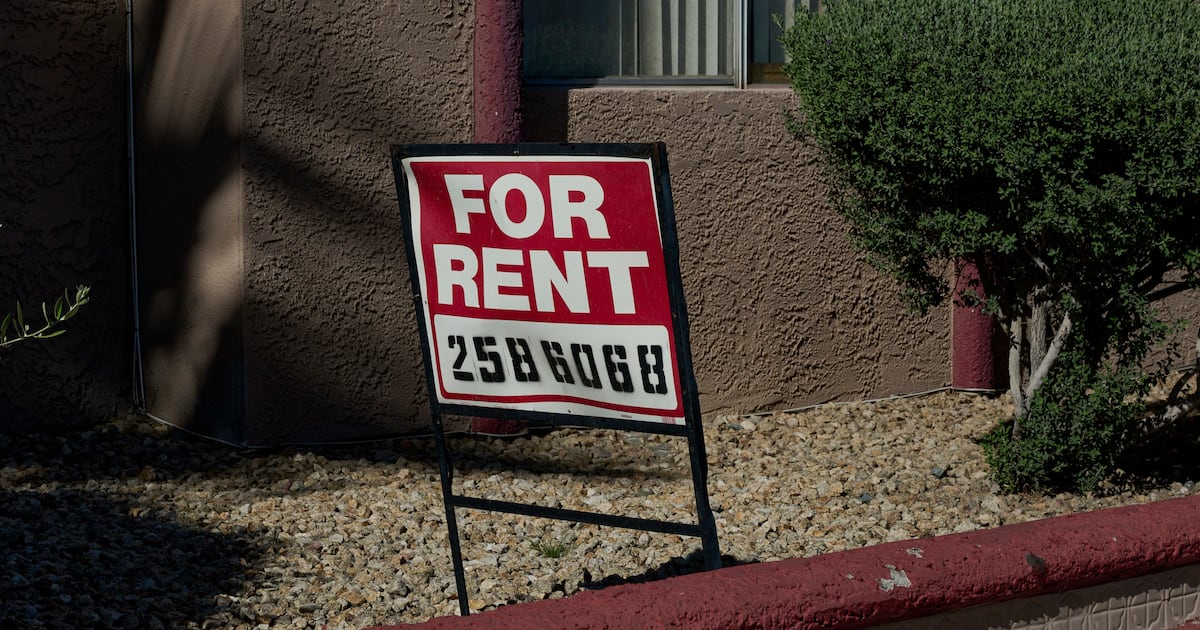
Tiffany Tagbo has been working two jobs – one full-time, one part-time – to make ends meet for most of the past decade, ever since the first of her two daughters was born. But a few months ago, her supplemental work expanded to 40 hours a week, and she began training for a third role.
“I found myself really working more than 80 hours a week just to be able to support my family during this difficult time,” said the 41-year-old Oklahoma City resident. The $400 a month she paid for health insurance consumed about half of her paycheck from her job managing a suicide prevention hotline. At the grocery store, there are calculations on even relatively small purchases, such as whether to buy eggs or her 4-year-old’s favorite cheese sticks.
Tagbo, who is now working with children with autism, follows the news closely and is aware that, by some measures, the costs of everyday life aren’t setting off as many alarm bells as a few years ago. Last month, consumer prices climbed at a 2.9 percent annual rate, government data show, well below the 9 percent recorded in June 2022. But “when you’re living paycheck to paycheck, sometimes it doesn’t seem like anything has gotten any better, even though inflation may have decreased,” she said.
That’s largely because key monthly costs for most Americans – shelter, food, health care, electricity – are outpacing inflation. Rents are up 3.8 percent – the largest increase since 2011 – the Census Bureau reported last week, and roughly half of all renters spend more than the recommended 30 percent of their incomes to cover the cost. Utility prices have spiked, according to the consumer price index, with natural gas and electricity bills rising 13.8 and 6.2 percent, respectively, since last year. And though President Donald Trump promised to lower food costs during the presidential campaign, grocery prices just posted their biggest increase since 2022, due in large part to his tariffs.
Other sectors where inflation is rising faster include homeownership and medical care, while falling gasoline prices help bring down the overall average.
“It’s not that they have a choice. We’re talking about things that people must buy. They have to live somewhere. … They have to heat their homes. They need lights,” said Mark Zandi, chief economist at Moody’s Analytics.
Adriana Barradas notices the new normal every time she picks up diapers. Back when her now-7-year-old was wearing them, she recalls paying about $40 for a month’s supply of premium name-brand diapers. Now, buying for her 8-month-old, the cheapest box she can find at Costco runs more than that, and it won’t last the month. “It’s expensive to have a baby nowadays.”
She’s also gotten sticker shock from her natural gas costs since moving in May: $800 on her most recent bill, when it had never topped $250 in her last home. Meanwhile, her partner’s work in construction has faced disruptions in Los Angeles, and the family has fallen behind on rent.
Maria Madera, 38, has become acutely aware of grocery prices since being laid off from a clothing store in Los Angeles. “The chicken was super cheap before, and now it’s like $20” for enough to feed her husband, a construction worker, and her two kids. Reluctantly, she visited a food bank for the first time in her life. “I was feeling so guilty – like, what am I doing? I was feeling so embarrassed,” she said. “But I saw other people that were the same as me. … Everything’s super expensive. You will see them at the food bank.”
Economists and political pundits have noted that Americans are feeling the same consternation about prices that helped return Trump to the White House, despite the fact that inflation is much lower than it was during the Biden administration. When prices spiked in 2022 and 2023, they didn’t revert when inflation eased. Now those existing high prices are coupled with big new jumps in certain sectors, like energy.
“I still have this memory that this used to cost half that amount three years ago, even though prices in the supermarket might now be leveling off,” said David Kass, a professor at the University of Maryland’s Smith School of Business.
Some of the specific pain points tend to be households’ monthly bills like utilities, rent or mortgage, and health insurance, not their sporadic purchases like furniture or even clothing.
Health insurance costs – pushed up by pricey and popular obesity drugs, tariffs, and the sunset of some federal subsidies – are projected to jump at least 9 percent for businesses next year, and more than 75 percent for people who buy plans on the federal marketplace.
Kass noted that health care costs have generally been rising faster than inflation for years, with experts offering explanations ranging from an aging U.S. population to consumers’ choices to seek medical care being skewed by what they know insurance will pay for. “Many policymakers have looked at this for many years, for decades, trying to come up with a solution. And it’s just embedded in our culture,” he said.
In some regions of the country, electric bills have been soaring. Power-hungry data centers that fuel artificial intelligence and other technologies have been gobbling up energy, leading to higher bills for everybody. At the same time, Republicans are winding down lucrative subsidies for the construction of low-emissions power plants that Democrats created under President Joe Biden, meaning fewer power plants are being built to fulfill the rising demand. The Federal Reserve Bank of St. Louis says the nation’s average electricity rate is more than 40 percent higher now than it was in 2019.
“I don’t think this is a two-month blip on electricity. We’re in for higher electricity prices for a while, and someone should do something about it,” said Josh Bivens, chief economist at the Economic Policy Institute. He suggested requiring companies that build data centers to pay for new infrastructure, as well as extending Biden’s climate credits.
Bivens said that policymakers should be worried about signs of a softening labor market. Nearly twice as many workers have gone at least six months without a job now compared to early 2023, a sign of a tough climate for unemployed Americans. In recent years, Bivens said, “for most people, wages and income kept up with inflation … In the post-pandemic period, there were a bunch of shocks going on. A lot of them hurt. But the buttress was an incredibly strong labor market. Now, we’ve let inflation start turning back up, and we don’t have an incredibly strong labor market anymore.”
Joe Brusuelas, chief economist at RSM, agreed: “We’re in a situation right now where inflation is getting out of the box again and it’s rising above wage growth.”
Brusuelas said he tries not to read too much into consumers’ grumbling about their bills, though. “I’ve never heard any American ever happy about their [day-to-day] costs.”



